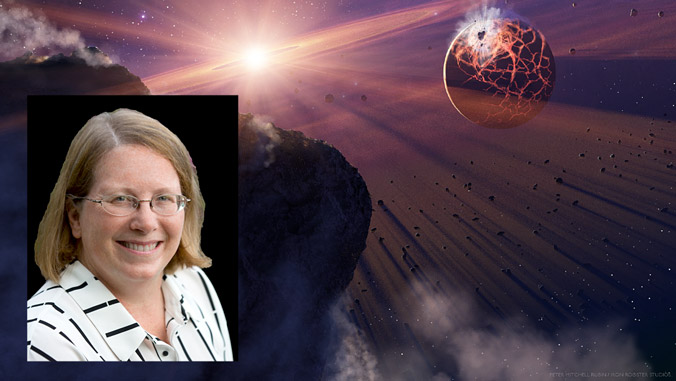
A University of Hawaiʻi Institute for Astronomy (IfA) astronomer has been named a fellow of the American Astronomical Society (AAS). Karen Meech was recognized for her ground-breaking research on solar and extrasolar comets, the distribution of water in the solar system, organization of large international observing teams, development and management of planetary science programs for teachers, and years of service to the astronomical community.
“This is a really exciting honor, and I’m humbled to be nominated for this by my colleagues,” said Meech.
AAS is a national organization of professional astronomers, astronomy educators and amateur astronomers. This year 21 members were honored for extraordinary achievement and service—an honor bestowed on only 0.25% of the 8,200 AAS members each year. They were recognized for original research and publications, innovative contributions to astronomical techniques or instrumentation, significant contributions to education and public outreach, and service to astronomy and AAS. Fellows will receive a certificate and a lapel pin.
“Karen is a truly extraordinary researcher with exceptional leadership skills who can assemble large, diverse teams to tackle some of the most profound questions in planetary science,” said Doug Simons, director of IfA. “I am thrilled to see her receive this recognition for her numerous research achievements.”
ʻOumuamua, Deep Impact, more
Meech is an astrobiologist interested in understanding how planets become habitable, especially how water was delivered to Earth. She led the NASA Astrobiology Institute at UH from 2004 to 2015; led the characterization of ʻOumuamua (the first interstellar object) discovered by IfA’s PanSTARRS telescope in 2017; has been a co-investigator on the Deep Impact, EPOXI and Stardust-NeXT space missions; and leads the development of future mission concepts.
In recognition of her research, Meech received the 2023 Dannie Heineman Prize for Astrophysics, was named ARCS Scientist of the year in 2018, awarded the UH Regent’s Medal for Research Excellence in 2015, and received the AAS Harold C. Urey Prize in 1994, the Annie Jump Cannon Award in 1988 and the Heaps Physics Prize in 1981.
A main focus of her work is studying the formation of habitable worlds by looking at comets, which are the earliest remnants of that process. As the icy, well-preserved left-overs of planet formation, these small objects provide clues about the chemistry and dynamics in our young solar system’s planet-forming disk.

